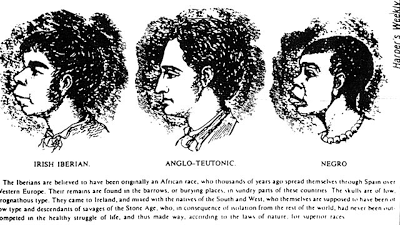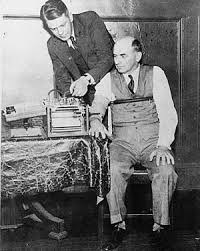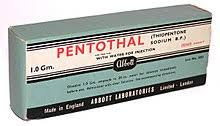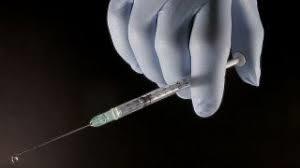Criminalistic Junk Science
 Cesare LombrosoIn the late nineteenth-century, Italian psychiatrist Cesare Lombroso advanced the idea of the "born criminal" based loosely on the work of naturalist Charles Darwin. Lombroso believed the criminal could be distinguished by "abnormalities" in the skull, face, and body. He compiled a list of criminal traits including receding hairline, forehead wrinkles, bumpy face, broad noses, fleshy lips, sloping shoulders, elongated arms, and pointed fingers.
Cesare LombrosoIn the late nineteenth-century, Italian psychiatrist Cesare Lombroso advanced the idea of the "born criminal" based loosely on the work of naturalist Charles Darwin. Lombroso believed the criminal could be distinguished by "abnormalities" in the skull, face, and body. He compiled a list of criminal traits including receding hairline, forehead wrinkles, bumpy face, broad noses, fleshy lips, sloping shoulders, elongated arms, and pointed fingers.In the Gilded Age of Queen Victoria, the belief there was a "face of evil" was an easy one in the era of Jack the Ripper. In the first half of the twentieth-century, this theory was strongly reinforced in American popular culture through radio mysteries, crime cinema, dime novels, and pulp-fiction detective magazines. This folklore reinforced the idea that criminals are easily identified because they look different from other people--loosely defined as "us".

Rather than scientific, these ideas broke along racial and ethnic lines. In nineteenth-century America, religion was also considered a prejudicial factor in determining guilt. It was generally believed by Anglo-Saxon Protestants--who made up the social and power elite--that Catholic and Jewish immigrants bore a greater responsibility for crime in cities like Boston and New York than law-abiding American folk. In Germany, the Nazis made great use of the pseudo-science of Social Darwinism against European Jews, which they documented in the last century.
 In the early twentieth century, two new forms of pseudoscience gained popularity in law enforcement circles, the polygraph test--also known as a "lie detector" test--and the intravenous injection of truth serum. The polygraph machine measures and records several physiological indices such as blood pressure, pulse, respiration, and skin conductivity. The belief is that deceptive answers will record a different response that true responses.
In the early twentieth century, two new forms of pseudoscience gained popularity in law enforcement circles, the polygraph test--also known as a "lie detector" test--and the intravenous injection of truth serum. The polygraph machine measures and records several physiological indices such as blood pressure, pulse, respiration, and skin conductivity. The belief is that deceptive answers will record a different response that true responses. Sodium pentothal was invented in 1934 intended to be a pain killer, but it was found to relax subjects who would answer questions put to them in an unguarded and uninhibited fashion while under the influence of the sedative. During World War II, the drug was widely used as an anti-anxiety drug by psychiatrists for battle fatigue.
 Polygraph printout.Polygraph tests measure arousal and are inherently subjective. They can be affected by anxiety disorders and other factors. In 2002, the National Research Council noted "There is no specific physiological reaction associated with lying. The mechanisms associated with lying are unknown making it difficult to identify factors that separate liars from truth tellers." The National Academy of Sciences stated that polygraph tests "are simply unreliable, unscientific, biased, and inadmissible in the United States court system."
Polygraph printout.Polygraph tests measure arousal and are inherently subjective. They can be affected by anxiety disorders and other factors. In 2002, the National Research Council noted "There is no specific physiological reaction associated with lying. The mechanisms associated with lying are unknown making it difficult to identify factors that separate liars from truth tellers." The National Academy of Sciences stated that polygraph tests "are simply unreliable, unscientific, biased, and inadmissible in the United States court system."The belief that lie detectors are a useful forensic tool is generally discredited, but the myth is keep alive in the popular culture through fiction and film. Polygraph tests today are the subject of comedy as in Meet the Parents 3 where Robert De Niro straps a vintage polygraph machine to Ben Stiller for comic effect.
 The idea of truth serum also has been the mainstay of pulp-fiction and true crime magazines. Its conceptual originator was Dr. Robert House in 1915. He gave the drug scopolamine to women during childbirth and noticed that they would speak spontaneously and respond to any questions put to them while under the influence.
The idea of truth serum also has been the mainstay of pulp-fiction and true crime magazines. Its conceptual originator was Dr. Robert House in 1915. He gave the drug scopolamine to women during childbirth and noticed that they would speak spontaneously and respond to any questions put to them while under the influence. Sodium pentothal was invented in 1934 by Ernest H. Volwiler and Donalie L. Tabern as a sedative or painkiller, but it soon became what the public regarded as truth serum. Side effects included short-term memory loss, headache, nausea, agitation, drowsiness, and up to a three day hangover.
 In 1963, the United States Supreme Court ruled that "barbiturate confessions" produced under the influence of truth serum were unconstitutionally coerced and therefore inadmissible. Truth serum results are not accepted by Western legal systems and legal experts as genuine investigative tools.
In 1963, the United States Supreme Court ruled that "barbiturate confessions" produced under the influence of truth serum were unconstitutionally coerced and therefore inadmissible. Truth serum results are not accepted by Western legal systems and legal experts as genuine investigative tools.There is no drug proven to cause consistent or predictable enhancement of truth-telling. Studies have found that subjects questioned under the influence of truth serum are suggestible and their memories are subject to reconstruction and fabrication. Another problem is what the subject perceives as truth cannot be differentiated from unbiased, factual truth.
Unlike fingerprint and DNA science, Social Darwinism, polygraph tests, and truth serum are considered junk science and have no place in modern investigative forensics.
Published on September 21, 2017 08:47
No comments have been added yet.



